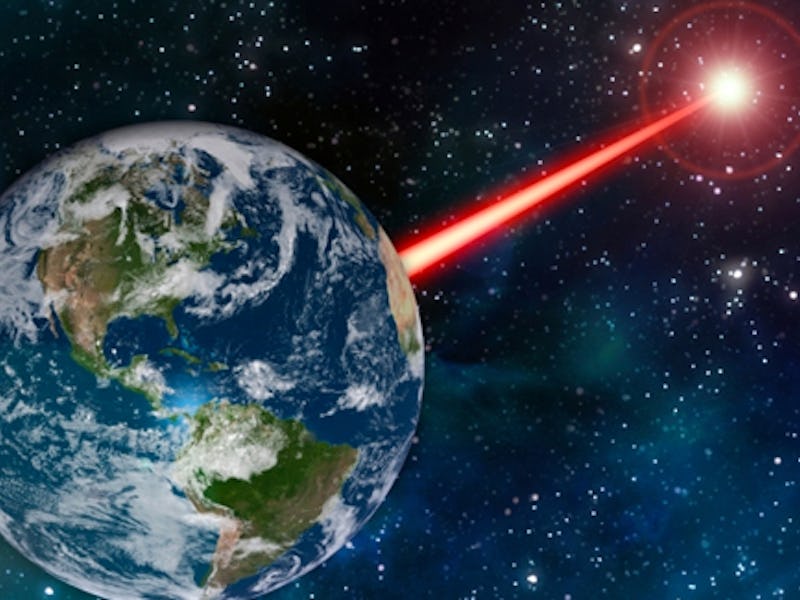Aliens Might Use High-Powered Lasers to Let Us Know Where They Are
SETI scientists are searching for extraterrestrial messages sent via laser beam.

The Search for Extraterrestrial Intelligence (SETI) has traditionally focused on detecting radio signals in its search for alien life, but a new collaboration between SETI’s Breakthrough Listen project and a massive gamma ray observatory called VERITAS will be looking out for laser-like flashes of light instead.
Humans have been broadcasting radio waves into space for about 100 years, ever since Guglielmo Marconi pioneered long-distance radio transmission. The logic behind SETI’s radio-based approach has been that other extraterrestrial civilizations might also use radio. However, a new kind of search is starting to be taken more seriously. It involves looking for brief flashes of light, like pulsing lasers, that could be used to communicate over interstellar distances.
“You can send even more bits per second on a light beam than on a radio beam. It’s just because it’s at higher frequency. So that’s just all pretty straightforward physics, but I think that the point has been in the past that it was difficult to produce a light source that was intense enough to actually generate the signal that could be easily detected,” Dr. Seth Shostak, Senior Astronomer at the SETI Institute in Mountain View, California tells Inverse.
The VERITAS array searches for high-energy gamma rays and cosmic rays from its location in the Santa Rita Mountains
In association with Breakthrough Initiatives VERITAS (the Very Energetic Radiation Imaging Telescope Array System) will search for pulsed optical beacons with its array of four 12-meter telescopes at the Whipple Observatory in Amado, Arizona.
Founded in 2015 by Yuri Milner, Breakthrough Initiatives is a program that assists scientific and technological research that’s connected with the search of life beyond our own planet. The telescopes at VERITAS can take the search to a new level because they were built to detect cosmic gamma rays and look for “pulsed optical beacons” – laser-like pulses of light – that are very short in duration, only a few nanoseconds.
Fun Fact: The term “laser” originated as an acronym for “light amplification by stimulated emission of radiation”
“What would the aliens know about us? Well, you know, if they’re more than 70 light-years away, they probably don’t even know we’re here because none of our high-powered transmissions have reached them,” Shostak says.
“But what they would know that there’s life on Earth because they will have measured the light reflected off our planet and will say, ‘Hey gosh, there’s oxygen in the atmosphere’, which is of course due to photosynthesis.”
The first mainstream pop-culture mention of a laser was in 1964, in the James Bond movie 'Goldfinger'
The most powerful lasers on Earth can transmit a pulse of 500 terawatts lasting only a few nanoseconds. If one were placed on Boyajian’s Star, about 1,470 light-years away, VERITAS would be able to detect it. However, most of the stars that VERITAS will observe are 10 to 100 times closer than that, up to nearly 150 light-years away. Current estimates suggest that there are between 5,900 and 8,500 stars within that distance of Earth.
A laser light burst could be used to show us where the message comes from or contain information about their alien civilization, or both. However, Shostak says it’s still important to continue to focus on radio transmissions as well.
“Typically a radio antenna will be have a much broader beam. It’ll be sending that signal to a much bigger patch on the sky than a laser transmitter, which might only target one star system at a time. So there’s somewhat greater hope that you might be in the beam of a radio signal than in the beam of a laser.”